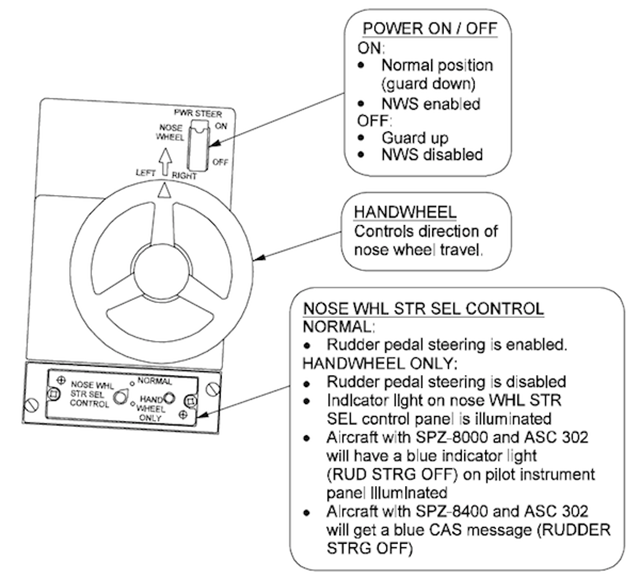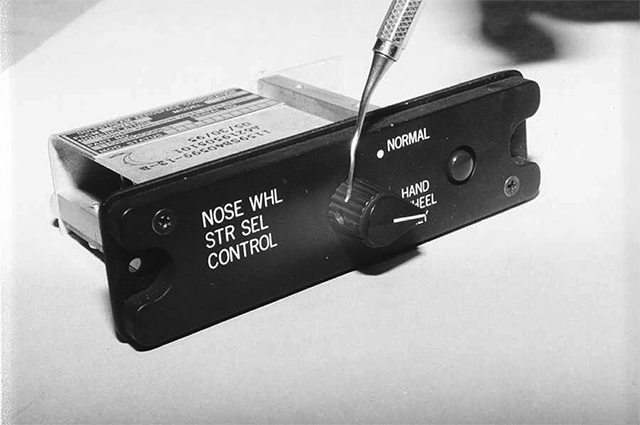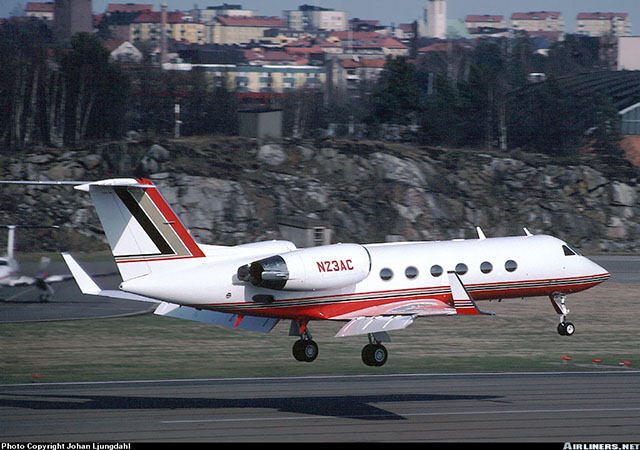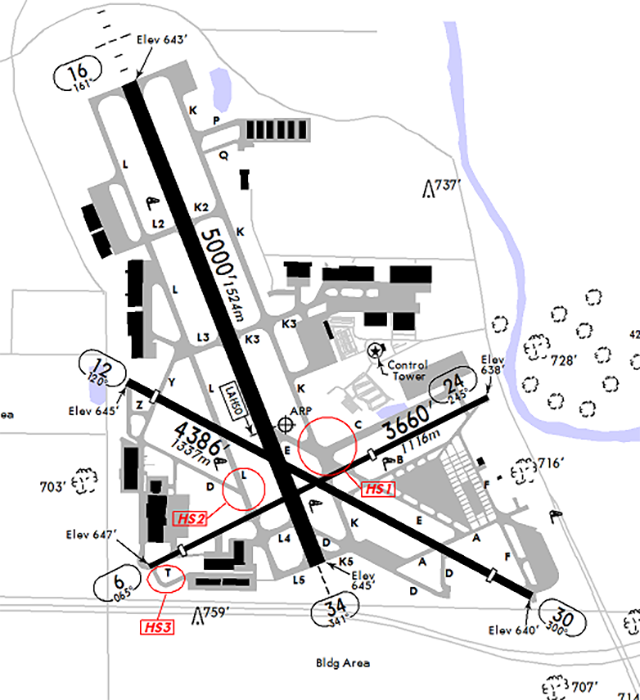This mishap was due to the pilot's inability to maintain directional control in a crosswind during takeoff. The aircraft was controllable but the pilot was using light airplane techniques (lifting the nose early) on a jet (keep the nose down until at least VMCG.)
— James Albright

Updated:
2014-06-03
The NTSB and the world writ large place emphasis on the position of a switch in the cockpit that links the nose wheel steering to the rudder. The existence of the nosewheel pedals disconnect switch owes to the progression of GIII pilots into the GIV. The older aircraft didn't have a connection between the rudder pedals and the nosewheel steering and Gulfstream wanted to make them comfortable with old techniques in a new airplane. In the GIV and those airplanes that followed, I've yet to see a credible reason to ever disconnect the pedals from the nosewheel steering. But I think it really didn't matter, since the pilot had a history of bringing the nose up early.
The NTSB did not grace this accident with a full report, perhaps thinking it was just a case of two pilots and a switch in the wrong position. Looking at the narrative they provided, however, there are a few lessons to be learned here:
- The Pilot flying had more propeller time than jet time and was known to lift the nose of the airplane early in an effort to "make it easier on the airplane on rough runways." The primary responsibility of every pilot is to maintain aircraft control and in a crosswind a tricycle gear airplane — certainly at GIV — needs to have the nose wheel on the runway at least until VMCG. If an older procedure or technique does not apply to what you are flying now, you need to leave it behind.
- Pilots in a flight department, and those in a so-called "interchange agreement," need to use standardized procedures when it comes to something as critical as control of the nosewheel.
- Pilots, even those with quiet personalities, need to be assertive in the cockpit. There are limits, of course, but good Crew Resource Management argues against timidity on the flight deck.
- Both pilots were called excellent stick and rudder aviators but there is more to being an aviator than the stick and rudder. If the aircraft deviates from centerline significantly below V1, the safest action may be to stop the airplane and reassess.

1
Accident report
- Date: 30 OCT 1996
- Time: 13:00 CST
- Type: Gulfstream GIV
- Operator: Alberto-Culver USA, Inc.
- Registration: N23AC
- Fatalities: 3 of 3 crew, 1 of 1 passenger
- Aircraft Fate: Destroyed
- Phase: Takeoff
- Airport: (Departure) Chicago-Executive Airport, IL (PWK) (PWK), United States of America
- Airport: (Destination) Burbank/Glendale/Pasadena Airport, CA (BUR) (BUR/KBUR), United States of America
2
Narrative

GIV Nosewheel Steering Control, from Gulfstream GIV Operating Manual, § 2A-32-00, pg. 59
- The accident flight was operated under the terms of an Interchange Agreement between the Alberto-Culver Corporation and the Aon Corporation. The interchange agreement provided for each company to lease their respective GIV airplanes to the other company. In regards to the accident flight, the Aon Corporation had requested the use of the Alberto-Culver airplane. Aon furnished one pilot making the flight a mixed crew operation.
- N23AC was scheduled to depart Palwaukee Municipal Airport at 1300 CST on October 30, 1996, for the Burbank-Glendale-Pasadena Airport with a return to Palwaukee the following day. The flight plan was filed by the pilot from Alberto-Culver who occupied the right cockpit seat for departure. Although the aircraft was operated by Alberto-Culver, the pilot from Alberto-Culver listed himself as the copilot for the first day of the trip from the Palwaukee Municipal Airport to the Burbank-Glendale-Pasadena Airport. He listed himself as the pilot-in-command on the flight plan for the return flight to Palwaukee Municipal Airport on the following day. The pilot from the Aon occupied the left cockpit seat for the accident flight and was listed on the flight plan as the pilot-in-command.
The PIC and PF was from Aon; the SIC and the aircraft were from Alberto-Culver.
- Prior to departure N23AC was parked on the ramp adjacent to hangar #12. A preflight inspection of the airplane was accomplished by an Alberto-Culver aircraft technician. The PNF was also observed performing a preflight inspection of the airplane. The pilots of N23AC received their ATC clearance from clearance delivery at 1242.
It appears the PIC/PF did not set up the left seat cockpit, this was done by the SIC who normally flew this particular airplane.
- The PNF called for and received taxi clearance at 1254. N23AC was instructed to taxi on Mike but hold short of runway 34. The flightcrew acknowledged the hold short instructions and began to taxi. At 1257 the local controller who was also working the ground control position cleared N23AC to back taxi and expedite down the active runway to the departure pad. N23AC taxied southeast on runway 16-34 and at 1258 the local controller asked them if they would be ready at the end. N23AC replied they would be ready at the end of the runway. At 1259, the local controller said, "Two Three Alpha Charlie, three four, expedite departure, turn left heading two niner zero, cleared for takeoff."
- The weather conditions reported on the "Foxtrot" ATIS transmission which was recorded on N23AC's Cockpit Voice Recorder (CVR) at 1229:25 CST was as follows: Wind estimated at 280 degrees at 20 knots with gusts to 35 knots, visibility greater than 10 miles, sky conditions estimated 2,500 feet overcast, altimeter 29.75.
- At 1259, the PNF replied, "Cleared for takeoff, heading two nine zero, we'll hurry it out." The pilots applied power and began the takeoff roll on runway 34. Passing the intersection of 12L-30R, tire tracks indicated the airplane began to diverge to the left of runway heading. As the airplane continued to diverge from the centerline of the runway the nose gear tire tracks ended; however, the main gear tire tracks continued into the grass bordering the runway.
That intersection is about 1,000 feet from the start of runway 34; the divergence had to have been obvious well prior to V1.
- The airplane remained off the runway and continued across the grass and across taxiways, Yankee, Mike, and November. Landing gear, flight control surfaces, and other airplane components separated once N23AC left the runway.
It appears two of these taxiways are no longer labeled as such.
- The airplane slid on its belly roughly parallel with the runway and momentarily got airborne when it launched off a small berm near the departure end of runway 34. Once airborne the airplane flew over Hintz Road, contacted the embankment along Wolf Road, and skipped over Wolf Road. It slid across a field and stream gully and came to rest on the edge of an apartment complex parking lot where the airplane was consumed by fire. Both pilots, the flight attendant, and passenger perished as a result of the accident and subsequent fire.
All witness statements support the scenario of a normal takeoff with no sign of a power reduction. In fact, the engines remained at full power after the airplane came to a rest.
3
Analysis
Both pilots were highly experienced but there are a few things of note:
- The PIC had 17,086 total hours of which only 6,691 was in jets and 496 in the GIV. Interviews indicated that he "tended to unload the nose wheel on the GIV during takeoff to make it easier on the airplane on rough runways."
- An instructor during the PIC's last recurrent noted he was "a little weak" in Crew Resource Management (CRM) and was not very assertive.
- The SIC had 12,595 total hours of which at least half of which was in jets. Interviews indicated that he was also not assertive and tended to cede authority to the left seat pilot.
About the nose wheel steering system:
The GIV nose wheel steering system is normally controlled by a combination of inputs from a hand tiller and the pilots' rudder pedals. The rudder pedals can be removed as inputs by placing a "Nose Whl Str Sel Control" switch from "NORMAL" to "HAND WHEEL ONLY."
- The Alberto-Culver flight department left the switch position to the discretion of the pilot, the Aon flight department usually left it in NORMAL. The last pilot to fly the accident aircraft left the switch in the HAND WHEEL ONLY position.
- Both pilots on the accident aircraft were known to have preferred the NORMAL position.
The winds were 280/24, creating about a stiff crosswind for Runway 34 but well within the aircraft's 24 knot demonstrated crosswind capability.
Cockpit Voice Recorder
The quality of the recording was poor, but the last seven seconds was as follows:
- At 1259:53, the PNF said, "Larry."
- At 1259:56, a sound similar to a human grunt was recorded.
- At 1259:58, the PNF said, "Larry."
- At 1300:01, rumbling sounds similar to that of an aircraft departing the runway were recorded.
- At 1300:02, the sound of a triple caution chime was recorded.
- At 1300:03, the PNF said, "Reverse."
- At 1300:04, the following words were recorded: "No no no." (The CVR group could not determine which pilot made the statement).
- At 1300:05, the following words were recorded: "Go go go go, go." (The CVR group could not determine which pilot made the statement).
- At 1300:06, the sound of an unidentified tone of increasing frequency was heard. At 1300:06, the sound of a triple caution chime was recorded.
- At 1300:07, the CVR stopped recording.
- The wreckage path began 1,340 feet from the approach end of runway 34 (all distances are referenced from the approach end of the runway) where three sets of dual tire marks started veering toward the left side of the runway on a 335 degree heading. The marks proceeded toward the left side of the runway at a 5.14 degree angle. The center set of tire marks ended at 1,705 feet and 35 feet right of the left edge of the runway. The left set of tire marks departed the left side of the runway at 1,810 feet and a set of two ruts began in the soft dirt and grass. The right set of tire marks departed the left side of the runway at 1,950 feet, and an additional set of two ruts began in the mud and grass. The tire marks did not veer back toward runway centerline, nor were there marks present that indicated braking action.
- The airplane became airborne on about a 354 degree heading until it impacted the road embankment at Wolf Road, at 6,043 feet from the approach end of the runway and 50 feet west of the runway centerline. The airplane skidded across Wolf Road, skipped over the north side of the road embankment, and landed in a vacant lot. The airplane skidded on its bottom fuselage across the vacant lot into Buffalo Creek.
- The airplane's main wreckage came to rest predominately on the north and south banks of Buffalo Creek and in the south parking lot of the Foxboro Apartment complex. It was located 380 feet west of Wolf Road and 6,646 feet from the approach end of the runway, and 53 feet east of the extended centerline on a 354 degree heading. The main wreckage consisted predominantly of the airplane's fuselage, the left and right wing sections, the tail section including the empennage, both engines, both thrust reversers, and the forward landing gear.

N23AC Nose wheel control panel, from NTSB Accident Docket CHI97MA017, Photo 30.
4
Cause
Failure of the pilot-in-command (PIC) to maintain directional control of the airplane during the takeoff roll in a gusty crosswind, his failure to abort the takeoff, and failure of the copilot to adequately monitor and/or take sufficient remedial action to help avoid the occurrence. Factors relating to the accident included the gusty crosswind condition, the drainage ditch, the flight crew's inadequate preflight, the Nose Wheel Steering Control Select Switch in the "Handwheel Only" position, and the lack of standardization of the two companies' operations manuals and Interchange Agreement.
References
(Source material)
Bureau of Aircraft Accident Archives
Gulfstream GIV Operating Manual, Revision 9, October 11, 2002
NTSB Aircraft Accident Summary, CHI97MA017, Gulfstream GIV, N23AC, October 30, 1996

